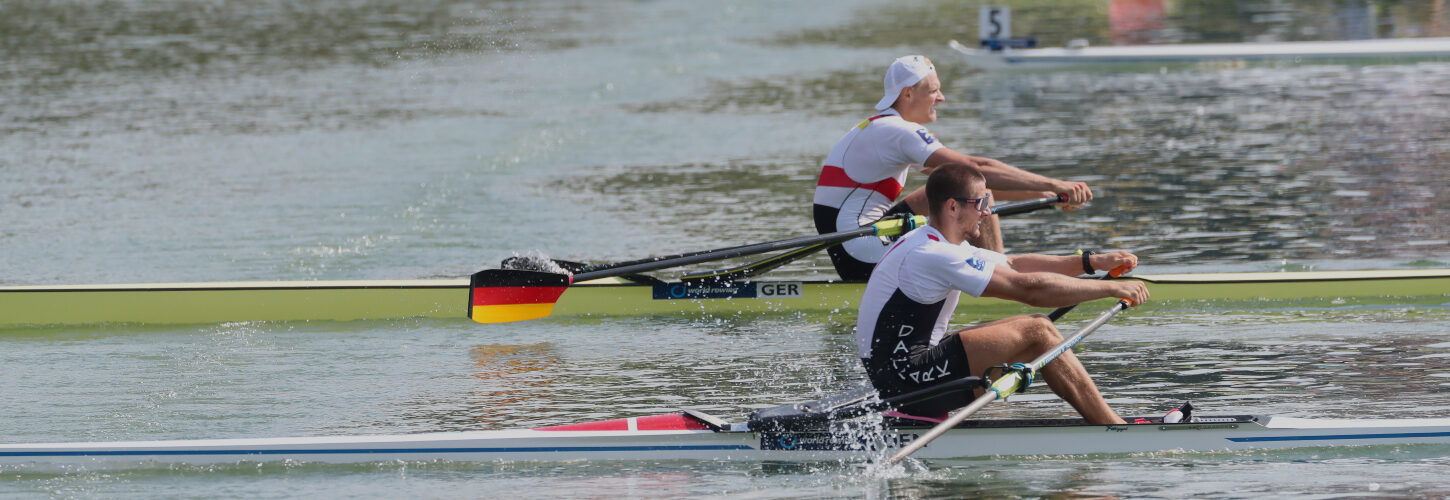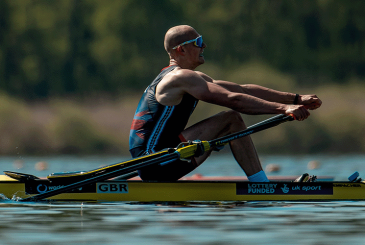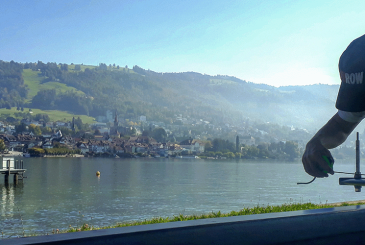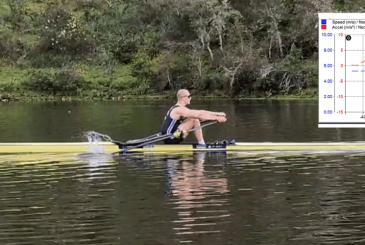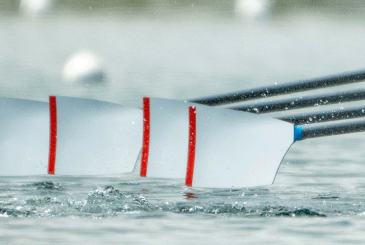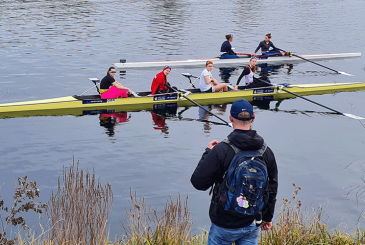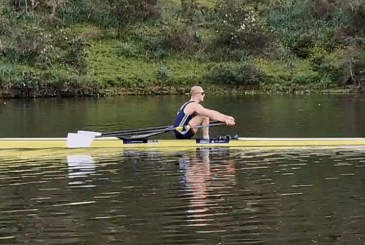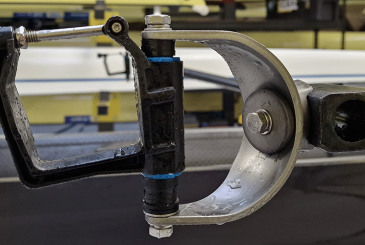What are the pros and cons of crews rating high? Coach consultant Robin Williams provides the key insights
As we gradually emerge from COVID restrictions and Britain’s rowers can enjoy the prospect of training back on the water, regattas will be starting again. Back in 2019 there was a lot of towpath discussion about how many crews seem to be rating higher these days, particularly the international ones we see on TV.
Historically, it is not the first time we’ve seen this trend, but what are the pros and cons?
Does it follow that all international crews will go down this route, and what about schools, clubs and universities? You have to weigh up many factors like technical skill, fitness, race distance, gearing, tactics, boat type and stroke length – just to mention a few. So, with people no doubt itching to get back into live racing, let’s take a look.
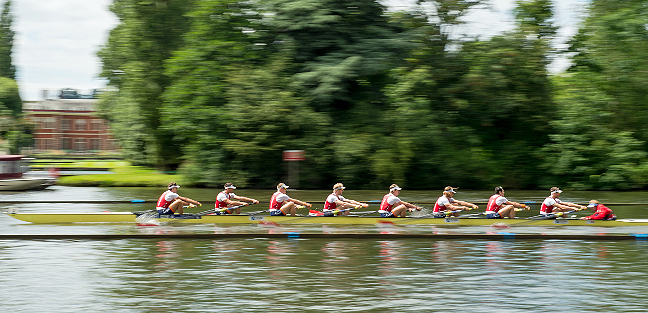
Typical race rates
It is probably fair to say that race pace (excluding the start or other sprint elements) is normally between rate 34-38 for most crews. We have seen, however, some crews at international events, including the senior worlds, racing at 40-42 or even higher, and even the single sculls can be up in the high 30s.
The fast Australian men’s four of 2017 and 2018 raced over the course at rate 42 or above and won both times, but not in 2019. At the recent European Championships in Italy, the Romanian men’s four started at rate 53, rowed the whole race above rate 40 and finished at rate 48! They did not win either. It seems to work for some and not others – and there are still examples of crews winning world gold medals at rate 35, so what is going on?
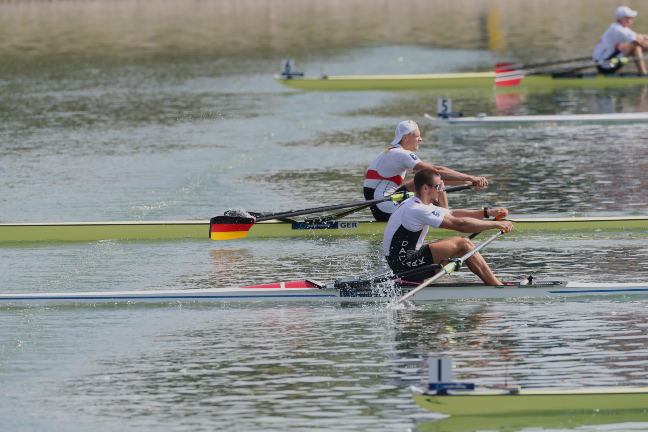
Advantages and disadvantages of high rate
Some potential advantages of high rate include:
- Get more strokes in
- Need less power per stroke to go a given speed
- Might have a more continuous rhythm
- Might even out the peaks and troughs of acceleration/deceleration
- Might maintain a higher average speed
- Might produce a more even race profile from each 500m split.
These possible benefits sound quite attractive, but let’s look at some of the disadvantages too.
At high rate you…
- Probably lose stroke length
- Need a massive cardiovascular capacity
- Might underuse the strength component of your physiology
- Use more energy changing direction at catch and finish
- Might have a worse rhythm, or even negative ratio
- Might lose control of your body mass
- Might lose accuracy with the blade
- Might find it harder to synchronise with the crew
- Might struggle to ‘go up [yet] another gear’ in rate.
There’s a lot to consider, so we will try to balance up these competing elements.
Low rates place a reliance on the drive phase, high rates require skill and mobility in the recovery phase
Power per stroke is interesting. To give an extreme example, supposing you want to row six minutes 30 seconds for 2,000m: to try and do it at 10 strokes per minute (!) would require super-human energy per stroke compared to rowing the same distance and time at 35 strokes per minute. In that sense it is easier to rate high.
In a real-life example we are perhaps looking at the merits of rate 35 versus rate 40, but the same decision arises – lower rates are more muscular, higher rates more ‘lungy’. Low rates place a reliance on the drive phase, high rates require skill and mobility in the recovery phase.
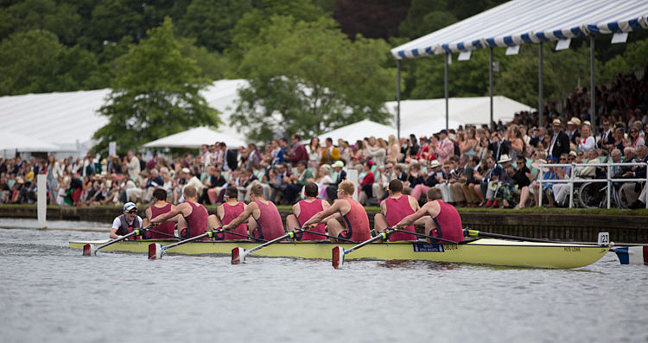
Length is another basic one and most teams these days are familiar with the idea of ‘Distance Per Stroke’ or DPS. This is the total travel of the boat for one stroke cycle, so it includes both the power phase and the recovery. The table below is for a theoretical crew racing 2,000m in six minutes 30 seconds at rate 36. It shows the data for some sub-maximal rates as well.
| Stroke rate | 500m split | Metres per second | % of 2k speed | Distance per stroke (DPS) | Number of strokes/500m |
| 28 | 1.46.9 | 4.68 | 91.2% | 10.02 metres | 49.9 strokes |
| 32 | 1.41.6 | 4.92 | 96.0% | 9.23 metres | 54.2 strokes |
| 36 | 1.37.5 | 5.13 | 100% | 8.55 metres | 58.5 strokes |
| 38 | 1.35.8 | 5.22 | 101.7% | 8.24 metres | 60.7 strokes |
The simple observation is that at low rate the boat travels further per stroke but not as fast. That’s why we generally don’t win many races rating 28 (let alone 10!). But as the rate goes higher, we take more strokes per 500m (obviously), and begin to lose DPS. So, there’s a trade-off.
High rate can actually cost speed rather than creating it
If the rate keeps going up, the DPS will keep going down and eventually we may not even see any speed increment. In other words, it stops being an efficient thing to do. In this example we are theorising that the efficient best speed is at rate 36, but it may be that we can go slightly faster at rate 37 without losing form. Maybe later in the racing season we might even have the fitness and skill to hold on to rate 38 or higher numbers.
The bottom row does show more speed for two more points of rate, but only if our physiology and skill are up to the task. You don’t go fast for nothing and it’s a question of whether you can operate at the high cadence or not and for how long. High rate can actually cost speed rather than creating it, so it is a matter of finding the pace which allows you to exploit your anaerobic power, aerobic fitness, and skill level without over-burdening one in preference to the others.
Technical considerations
At low rates, the stroke cycle takes longer so the rower has more time to perform it. At high rates, the rower needs a lot of skill to deliver the stroke in much less time. For example, at a steady rate 20, the stroke cycle takes three seconds or roughly one second for the drive and two seconds for the recovery. This ratio would make for a comfortable rhythm with plenty of time to organise each stroke.
At rate 40 the total cycle takes one and half seconds – half the amount of time compared to rate 20 – and the drive will now occupy about 0.7 of a second and the recovery 0.8. These numbers will vary a bit from the single to the eight – and with fast or slow conditions – but illustrate how the recovery time reduces much more than the drive time.
At rate 42 you now have only 1.42 seconds for the whole movement. Not much at all, and the recovery time might even become less than the drive – effectively a negative rhythm. If that happens, the rower may feel rushed in the recovery, which impairs the ability to organise hands/body/slide for the next stroke. That, in turn, can make the catch tense, bodies off balance on the stretcher and so on. A single sculler might be able to manage all this, but synchronising a crew is very challenging.
Remember that the international crews are full-time athletes, rowing perhaps 18 sessions per week, so they have more time to train and explore these pacing strategies than the average club, school, or university crew. Have a look at racing videos of the high-rate boats and compare with the steadier ones: usually they will look a bit short on length; usually they don’t use as much body angle and, particularly at the catch, will tend to sit with the hip angle more open (less rocked over). It makes a strong position to load, but sacrifices length. The movements tend to blend together more as well, so the rhythm can become less defined.
Finding your own pace
So, it is a matter of each crew finding out their own efficient zone. A good training workout is to do 8-10 x 250m at different rates and with a 250m rest each time. Starting at rate 24 and moving up two points each piece, the last one being at rate 40. If you don’t have a measured still-water distance then you could do 15 strokes at each step instead, but it helps to know your speed at each step so you can spot the point where it becomes inefficient.
The aim is to go at the right speed for each rate – not faster, nor slower – and with good rhythm. Typically, crews rowing at rate 22 (UT1) are looking for sustained speeds of about 80% of their 2k target. For each extra two points in rate, the speed increment should be around 3% to 2.5% between rate 20-30 but higher up, the increments will be 2% or less. If you use data from National Schools or Henley records you can see the times over the years – work out what 100% is for your boat class (ie winning times), and derive training speeds from those.
The above session provides a useful way to explore the rate versus speed debate and to see where your efficient zone is. However, 250m is a short distance, so it doesn’t guarantee you can keep it up – you need to test the learnings over longer distances as well, hence why clubs do pieces of 500m, 1000m or other workouts. It might be worth trying it out on a rowing machine (or single scull) first because it is just one person to one machine, so the feel is not complicated by other crewmates!
Current trends
Looking at the 2019 World Championship data from Linz, Austria, for the middle 1,000m of the A finals, it appears that women’s crews were generally one to two points lower than the men.
The sculling boats of the singles, doubles and quads were slightly lower than their sweep equivalents. The gender difference is mostly likely accounted for by power/kg difference, and the two disciplines by stroke length since a sculling arc is longer than a sweep one.
So, I think the international debate will continue, but suspect the Tokyo Olympics will see medals going to both high and ‘normal’ rating crews. Domestically, Henley Royal Regatta video footage for 2018 and 2019 races shows almost all boats, mid-race, at rate 36+/-, so there is less evidence of the trend on home waters. Given the lack of water time due to COVID restrictions in the last 12 months I think most of us would do well to focus on quality of strokes rather than quantity, but time will tell!
Photos: Igor Meijer, Hamish Roots, Glyn Reed


